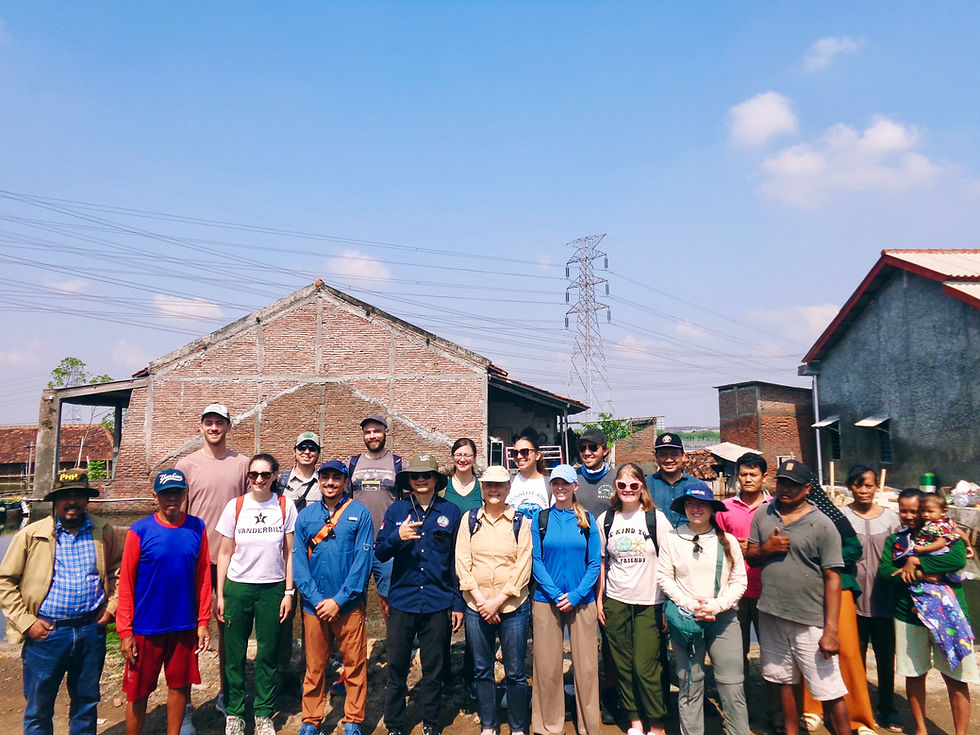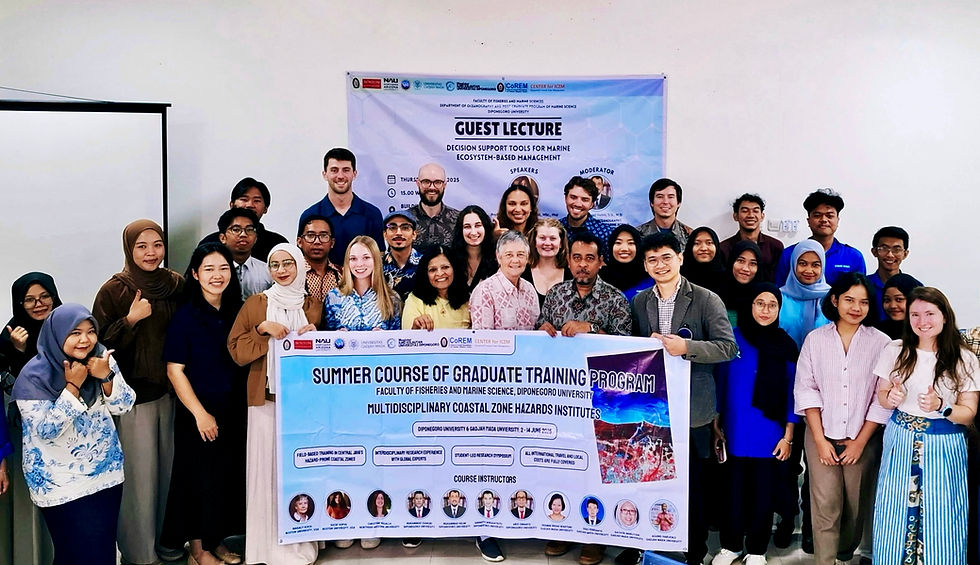Living with Coastal Change: Lessons from Indonesia
- hannahhenry2000
- Jul 30
- 3 min read
In June, I had the privilege of participating in the NSF-ASI Graduate Training Program in Coastal Hazards—a multidisciplinary, international exchange focused on natural hazards, climate adaptation, and resilience in one of the world’s most complex and dynamic coastal regions.

For two immersive weeks, we traveled across the island of Java, Indonesia, engaging with university faculty, researchers, engineers, and community members who live and work at the intersection of science, risk, and resilience. The program took us far beyond the classroom—into rice fields flooded by saltwater intrusion, fishing villages contending with vanishing shorelines, and cities where land subsidence and sea-level rise are colliding in real time. We listened, we learned, and we asked questions not just about how to adapt, but about how to adapt equitably—in ways that center both local knowledge and long-term sustainability.

Every place we visited told a story. In Semarang, we stood on coastal roads permanently underwater, where homes now rest on stilts and tidal flooding is part of daily life. In Demak, we saw mangrove restoration used not just as a buffer against erosion, but as a lifeline for communities losing arable land. On the slopes of Mount Merapi, we learned how volcanic hazards are monitored by researchers and respected by local people who have lived alongside the volcano for generations.

What struck me most wasn’t just the scale of the challenges—it was the creativity and commitment of those addressing them. We saw how researchers are developing cutting-edge models of hazard risk while communities mobilize with traditional knowledge and social networks to respond. The solutions are rarely simple, but they are rooted in place, people, and lived experience.

As a coastal scientist working thousands of miles away, this experience challenged me to think more expansively about my own research. It reminded me that resilience isn’t just a technical term—it’s a lived reality. It’s about the decisions people make every day in the face of uncertainty, the strength of communities, and the stories we choose to tell about the future.

I’m especially grateful to the National Science Foundation for supporting this experience, to Boston University for leading its coordination, and to our generous hosts at Diponegoro University and Universitas Gadjah Mada. Thank you to the instructors, researchers, students, and community members who opened their homes, shared their work, and welcomed us so fully.

I return with new collaborators and friends, a deeper appreciation for the role of community-informed science, and a renewed commitment to research that is globally engaged, locally grounded, and driven by connection as much as data.










Comments